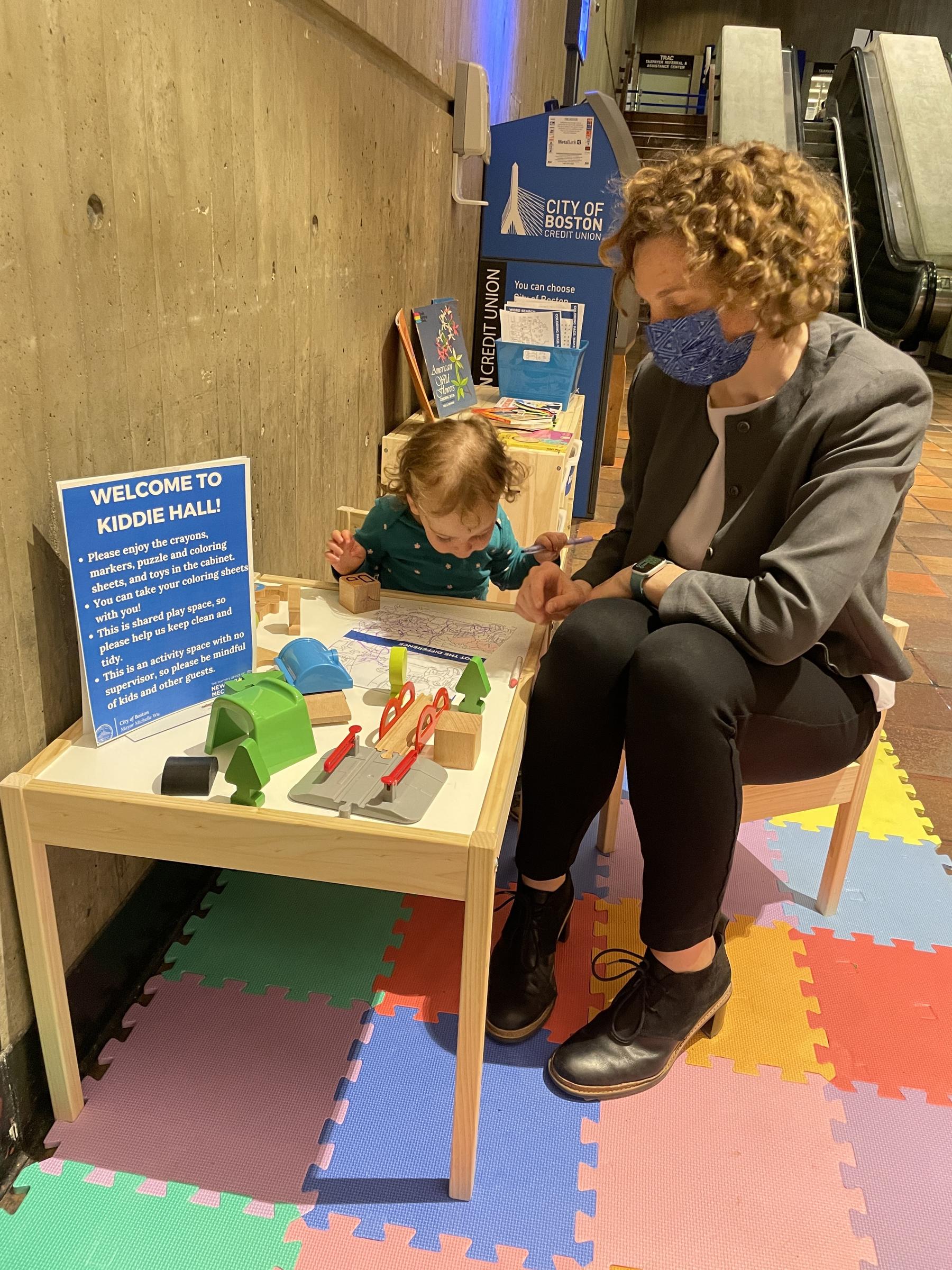Kiddie Hall 2.0
We made a kid-friendly play space in the depths of City Hall. Did it make visitors and colleagues feel more welcome and connected?
THE EXPERIMENT
Kiddie Hall is a multi-year, ongoing project to make Boston City Hall a friendlier, more welcoming place for children and their families. Previous iterations of this project included partnering with Property Management and the Parks Department. We developed develop initial concepts for the redesign of the City Hall Daycare playground through research, interviews, planning, and design mockups. These concepts all incorporated principles of childhood development through the Boston Basics.
We ran the Kiddie Hall 2.0 prototype to explore making City Hall more welcoming to the children and families of the building’s constituents and guests. Kiddie Hall 2.0 was on the second floor of Boston City Hall, just outside the service windows for the birth, death, and marriage certificates (all overseen by the Registry). There are clear sight lines from most of the windows to this space, so we thought caregivers might feel more comfortable letting their little ones participate in the space.
By making this space — which is synonymous to so many with bureaucracy, unfriendliness, and fines — more joyful for children, we hope that young people will feel welcome in the space. We also hope their caregivers will experience less stress and feel more comfortable while conducting civic business.
Project Questions
- How do we make civic spaces engaging and welcoming for children?
- What are indicators of the impact of "wonder" or "delight"? What are the secondary effects of "wonder" or "delight"?
- Where, when, and why do people feel welcomed or unwelcomed in a space?
- Do Kiddie Hall 2.0 activations have an impact on City staff who work on the second floor?
Why We Did This
At the Mayor's Office of New Urban Mechanics (MONUM), we ask how we can design and create opportunities for government to anticipate and meet the needs of Bostonians. For Kiddie Hall 2.0 in particular, we saw this as a chance to welcome our youngest neighbors, and by extension, all people into this space. Boston City Hall is more than a space for civic business — it’s a hub for our community. By investigating these questions through this prototype, we hope to better understand how designing with children in mind can make civic spaces more welcoming for children and their caregivers.
What We Learned
What We LearnedDesign for Kids
Color, scale, and freedom are key to creating a welcoming, playful environment for children and families.
By making intentional space for children to play, caregivers with clear sightlines to Kiddie Hall 2.0 were more present and efficient in their City business. This was something appreciated by families and City workers.
Benefits for Employees
Kiddie Hall 2.0 made the 2nd Floor a warmer, happier space for City employees. Multiple City Hall workers reported:
- a happier atmosphere
- more focused interactions with constituents, and
- less rambunctious children.
They loved seeing the children at play, less likely to cause mischief!
Operational Lessons
Seating is in short supply in the building and much in need. We saw several adult constituents use Kiddie Hall 2.0 to complete paperwork, rest, wait, and color themselves.
Kids are messy! Every-other-day check-ins of the space were needed to make sure the installation stayed clean and professional.
Next Steps
We are pitching a permanent installation of Kiddie Hall 2.0 to the City’s Property Management. We will also see where in the City of Boston we can do similar installations. Kiddie Hall 3.0 at the Bolling Building? At a busy City bus stop? Send us your thoughts on what public government spaces we should pilot Kiddie Hall 3.0!


